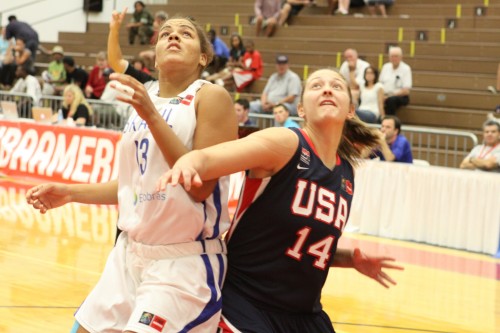
An Olympic future? A few locals are worth watching
August 1, 2012Title bout headlines wrestling event
August 7, 2012Tucked away in the small town of Franklin is a treasure of historical measure. The Young-Sanders Center stands as a wealth of information on the Civil War, otherwise known as the War Between the States.
Created in 1996 in Morgan City, the center moved to Franklin as a private entity in 2002 on request of Mary Elizabeth Sanders, daughter of Jared Young Sanders Jr. and great-granddaughter of Jared Young Sanders Sr.
Sanders Sr. served four years as the 34th governor of Louisiana. Born in Morgan City he, attended school at Tulane. Before serving his term as governor, the elder Sanders worked in Franklin, where Jared Young Sanders Jr. was born and raised. Sanders Jr. had a political career as well, winning elections to Louisiana House of Representatives and Senate and the U.S. House of Representatives.
A large portion of Sanders Jr.’s later years were spent living in Baton Rouge, where he and his wife Mary Briggs gave birth to one daughter, Mary Elizabeth. As an only child, and having no children of her own, Mary Elizabeth longed to preserve the history of her family and enhance this history of the state and its building blocks.
“Mary Elizabeth created this for the knowledge and the truth to be out that’s not taught to kids in school,” says Roland Stansbury, director of the Young-Sanders Center. He serves with a board of six people that included Mary Elizabeth as president, until she passed away in 2006. Today, the president is Fritzy Martin, a life-long friend of Mary Elizabeth’s.
The Young-Sanders Center consists of a library and meeting hall. The library has hundreds of rare books and documents pertaining to the Civil War. Some books require the reader to wear gloves due to the age and wear and others are signed by original authors, driving up the expense and scarcity. The center attracts scholars and inquirers of all kinds, from college professors and researchers to relatives of war soldiers looking for documentation.
“We have the best library on the War Between the States probably in Louisiana, even over most universities,” Stansbury says. “Most universities don’t have this many books on the War Between the States, and we have a lot of rare books.”
Adding to the artifacts of the Young-Sanders Center is a new endeavor that involves the purchase of a home filled with Sanders family antiques. One of Mary Elizabeth’s final requests was that her family belongings not be scattered. She wanted the historical furniture and things to remain together as they were in her house. She lived her life in a house on Wisteria Street in Baton Rouge, which she willed over to the Young-Sanders Center along with a trust for the organization to carry on.
The distance was wearing on the members of the center, and they were advised to sell the house and move the furniture elsewhere. It was a tough decision to sell the house where Mary Elizabeth grew up, but it was best for it to be close to the center, so they relocated to Franklin.
“It was too hard to keep it as a museum with the distance from the center,” Martin says.
In finding a new house, the board members first considered the original home where Sanders Sr. lived and Sanders Jr. spent his childhood. But the beautiful home that once stood on a large plantation was turned into apartments, and the land is now full of homes and other buildings.
“The house [in Baton Rouge] was old and needed a lot of repairs,” Stansbury says. “We put our heads together and decided to consolidate to one place in Franklin. We looked for a long time and we found just a half a block from us, this historic home that came up for sale, so we sold her home and bought this house. We moved everything that she owned and moved it over here. She used to ask me, ‘Please don’t let all of these antiques be scattered all over.’”
The Hughes family, involved in the lumber industry around the 1830s, built the historic home. Stansbury says not much is known of the family and no relatives live in the town, but center administrators continue to search for more information in order to honor the family as well.
All of the Sanders furniture was relocated to the new home and reorganized to best display its original layout on Wisteria Street. When one walks inside, the oldest piece stands in front, a secretariat made in 1810. Dining room chairs from the 1800s made by slave labor sit around the table, and the bed where Mary Elizabeth was born is in a bedroom.
While many of the rooms are set and clean, they are still in the process of remodeling and organizing and hope to have tours started within the next two years. Stansbury says he hopes to provide free tours to the public around four times per year, announcing tour dates on their website and to their members.
More information about the center is available at www.youngsanders.org.
The Hughes family, which made a living mining timber in the 1830s, built this house at 703 First St. in Franklin. The Young-Sanders Center is readying the home for tours.
The stairway leads from the front door at the former Hughes home in Franklin.
Chairs line the meeting hall at the Young-Sanders Center, framing a portrait of former Gov. Jared Young Sanders Sr.
Swords used in the Civil War are on display at the Young-Sanders Center.









